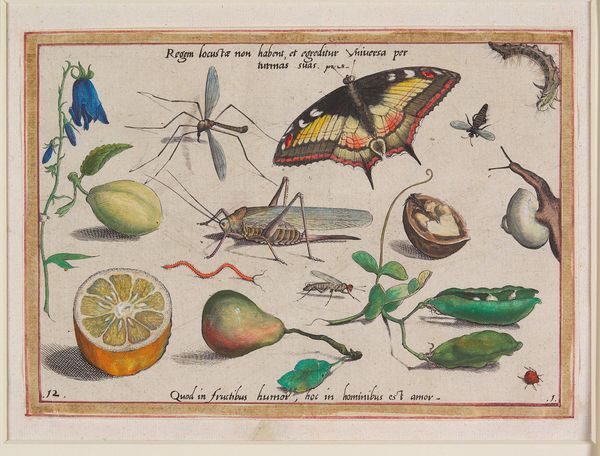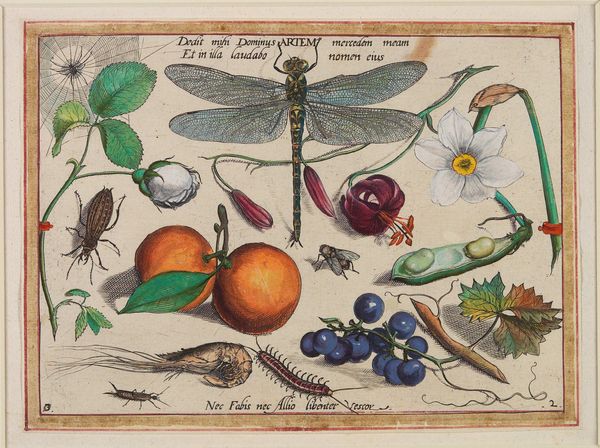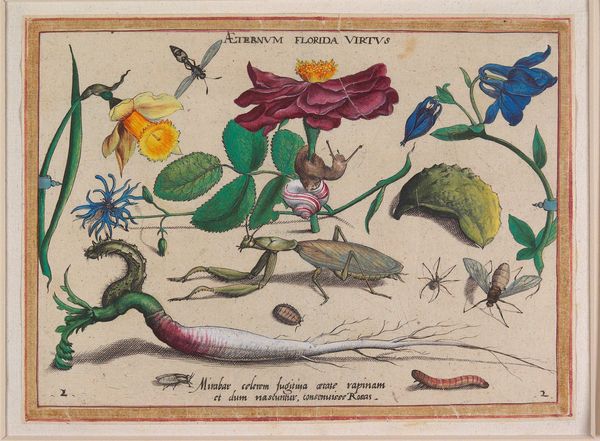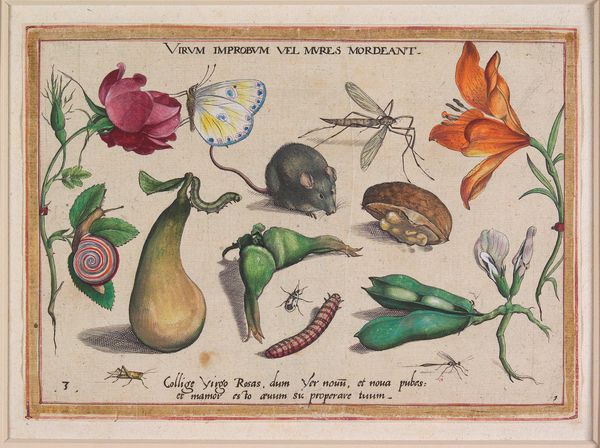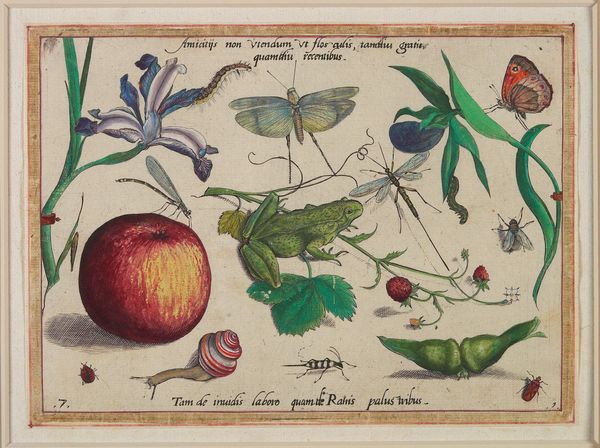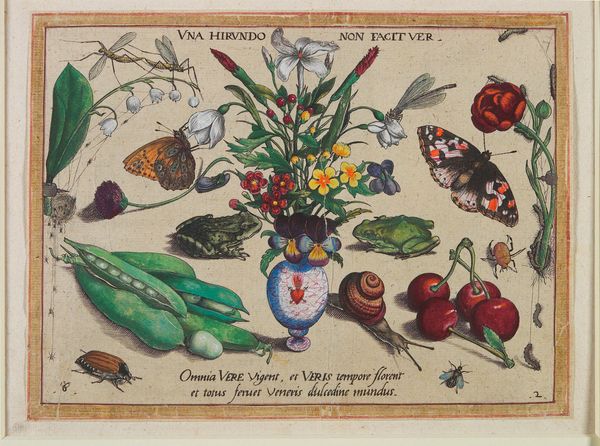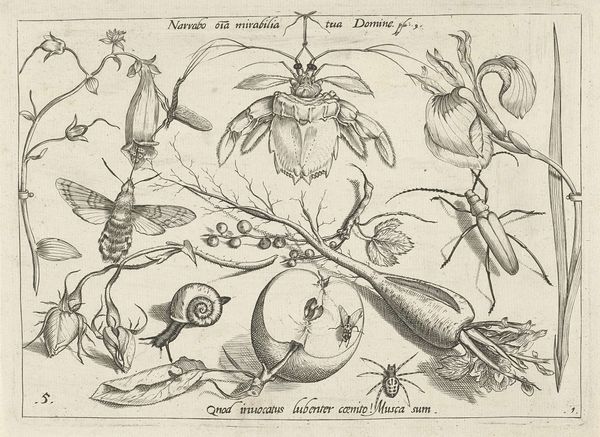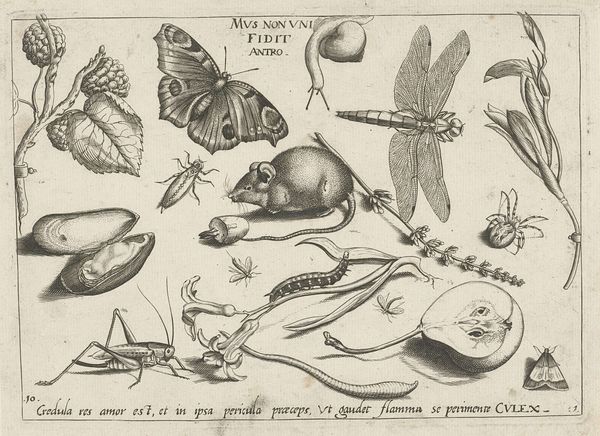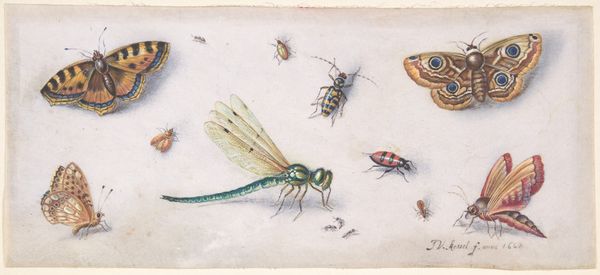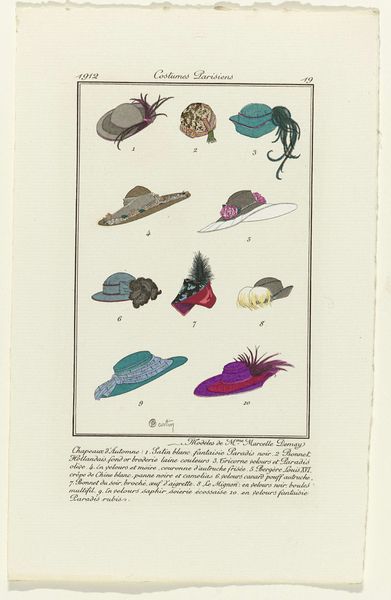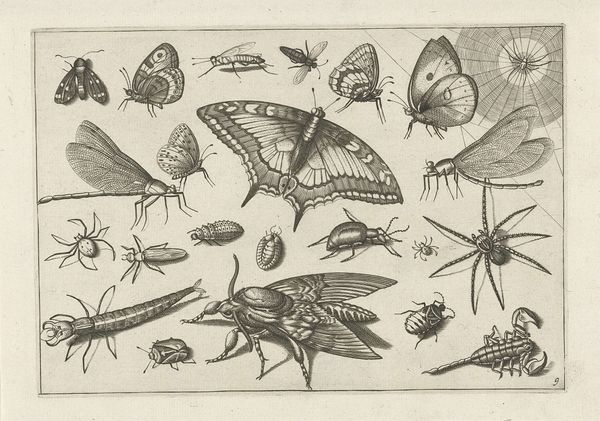
coloured-pencil, painting, print, watercolor
#
coloured-pencil
#
water colours
#
painting
# print
#
watercolor
#
coloured pencil
#
northern-renaissance
#
academic-art
#
miniature
Dimensions: 6 1/4 x 8 3/4 in. (15.88 x 22.23 cm) (plate)
Copyright: Public Domain
Curator: This is Jacob Hoefnagel's "Versicolor Coluber," a watercolor and colored pencil piece from 1592, currently held at the Minneapolis Institute of Art. The array of flora and fauna really strike me. It almost feels like a scientific illustration, yet more whimsical. What do you see in this piece? Editor: It’s intriguing. I immediately think about the artist’s process. All those insects and plants, and the lizard – it must have been incredibly time-consuming and labor-intensive to render each of these specimens so precisely. The cost of the pigments too. I’m curious, could this piece be understood in relation to ideas around labour and craft? Curator: Precisely! Think about the meticulousness itself as a form of skilled labor. Hoefnagel's detailed depictions elevate the act of observation and recording. How does this attention to detail then interact with the status of, say, an illuminated manuscript page versus a purely scientific drawing of that period? What distinctions can we draw concerning patronage, readership, and display? Editor: So, the materials and process aren’t just about representation; they’re also commenting on value. Is this an argument, then, for craft as a higher art, or is it using the veneer of ‘high art’ to elevate scientific observation? Curator: An interesting point! Consider how the economic and social systems shaped Hoefnagel’s artistic practice. Who commissioned this? Who would have consumed it? The answer illuminates the cultural forces at play in the creation and reception of this piece. Editor: That shifts my perspective. It’s less about the objects depicted and more about how they’re presented, who's consuming that presentation, and the social structure that enables its consumption. Curator: Exactly. Reflecting on the process, materials, and audience allows us to move beyond mere appreciation to a deeper understanding of the art's meaning and its place within a broader social and economic context. I see this work, now, in an entirely new light, understanding more about production processes. Editor: Me too. It makes you appreciate how intertwined art, labour, and consumption truly are.
Comments
No comments
Be the first to comment and join the conversation on the ultimate creative platform.
